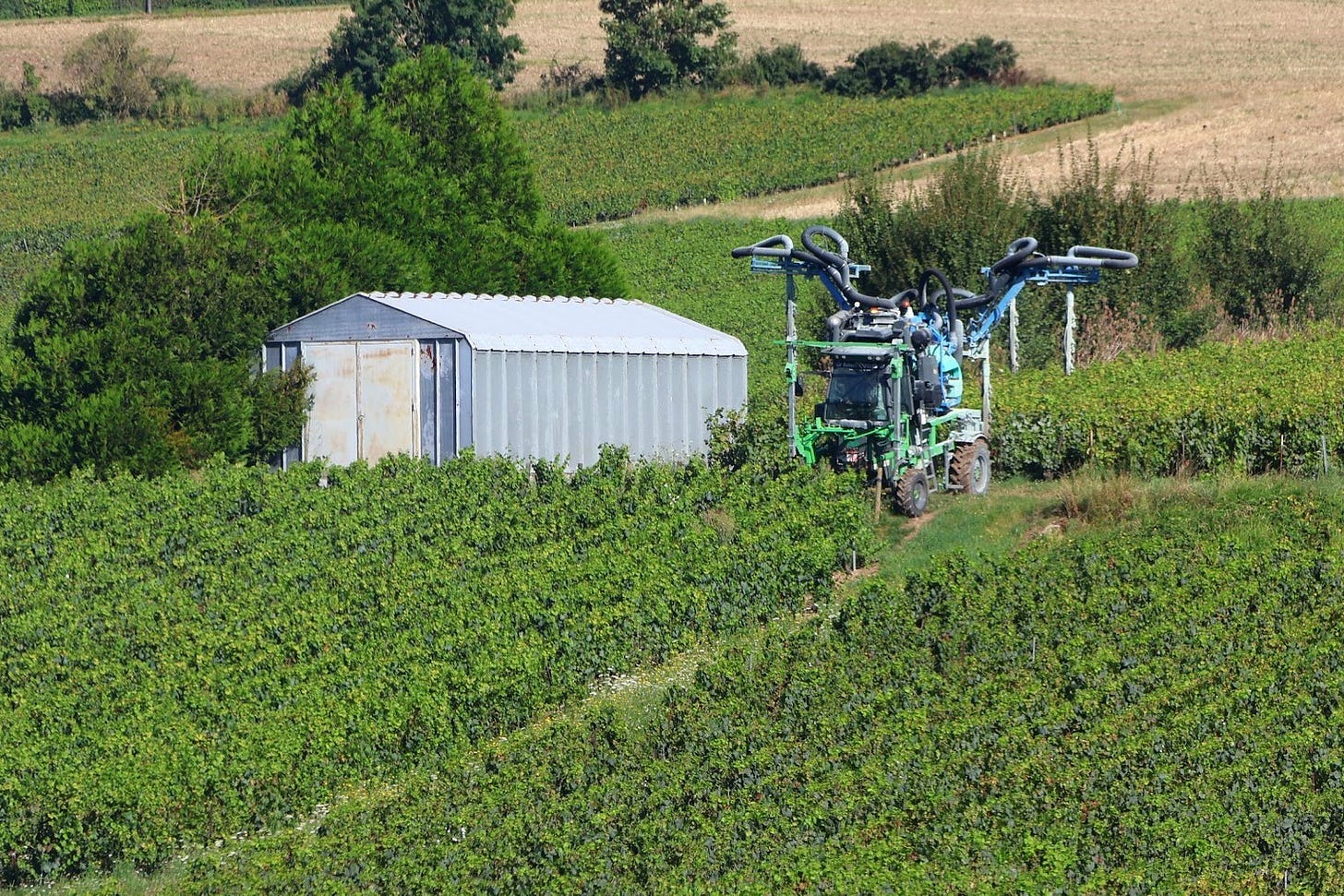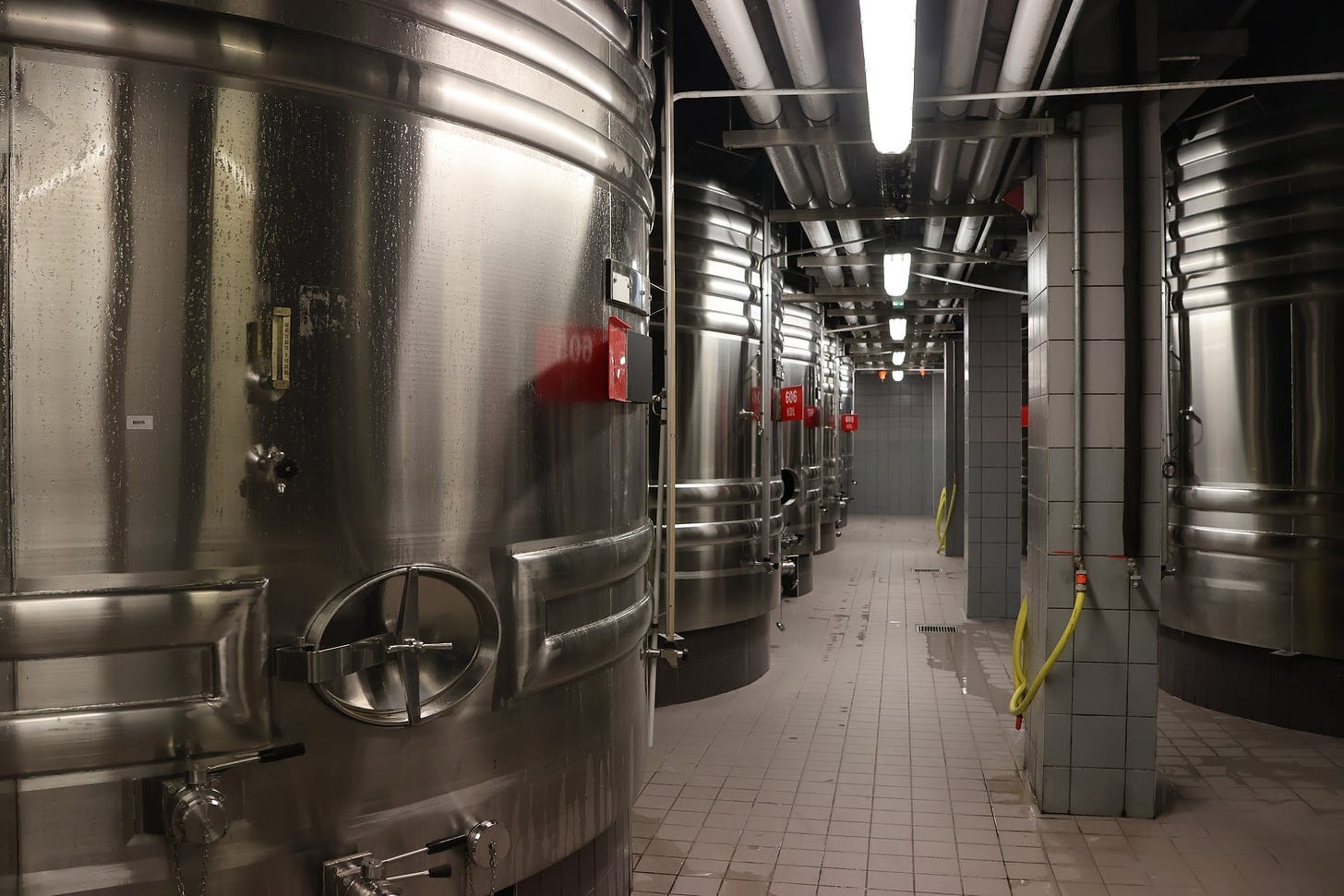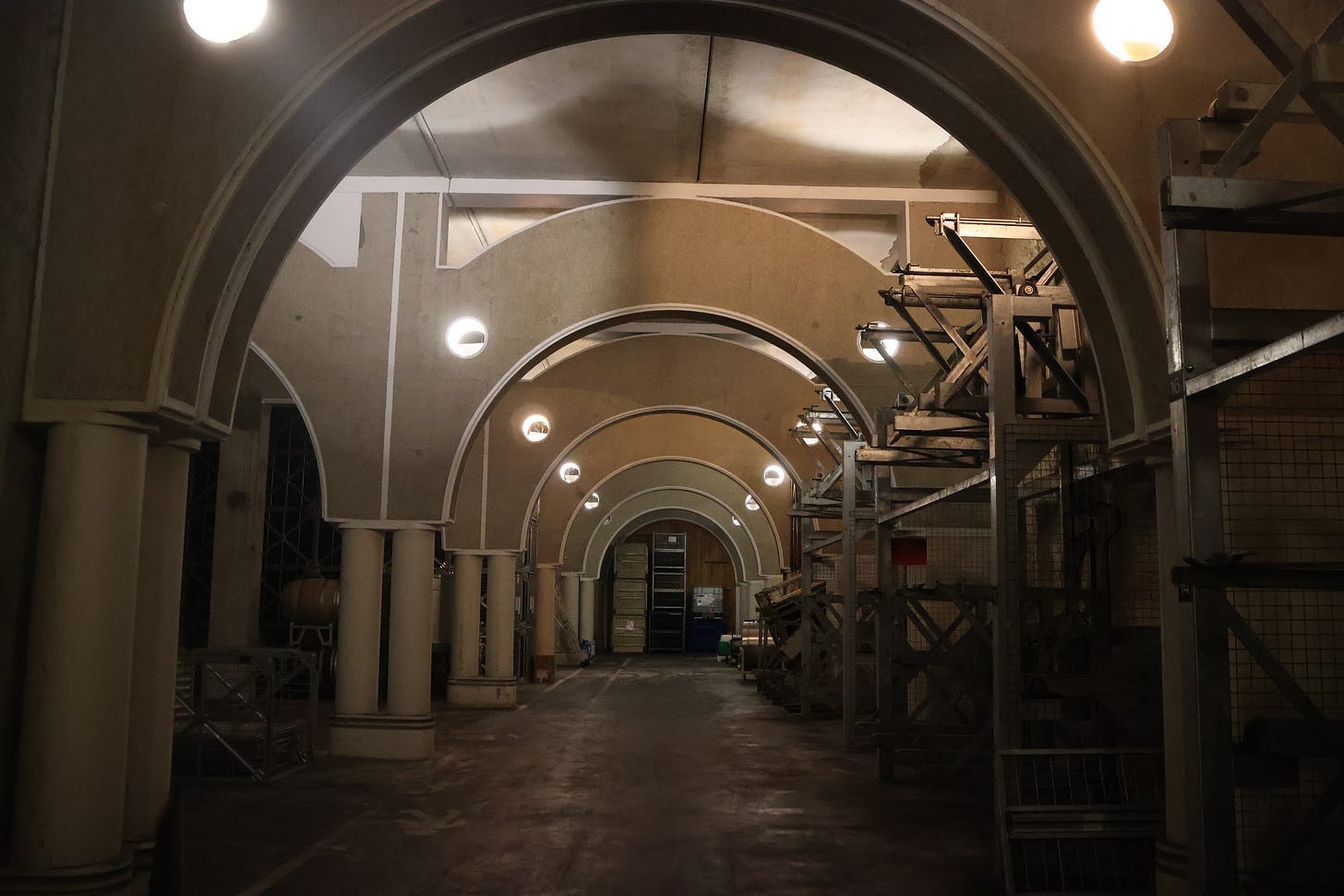Working in a French restaurant (in Australia) you may imagine we have swathes of French guests. Funnily enough, this is not the case. With few exceptions, the vast majority come in wanting to listen to an accordion-rendition of La vie en rose on repeat, which drives those of us working there just a little insane. When French guests do come in, and the even rarer occasion when French guests come in who speak little to no English, I take great pleasure in looking after them, using my French to guide them through the menu.
If you want to read more about French dining venues, check out this post from our guest author
Table 61
This occurred in the last week of July, when a table strolled in and asked, in broken English, to have a meal. Their waiter asked me to jump in and help with translation. “There’s Frenchies on table 61”. Allons-y !
After some light hearted banter, they revealed they were here for Taste Champagne 2024 — a large wine trade event showcasing some of the biggest Champagne producers from the region. Digging a little deeper, I discovered that we had previously been selling one of their bottles on our list by the glass, and I was in fact talking to the président de la maison (CEO) Damien Champy and their commercial director Agathe Bellanger of Le Brun de Neuville.
Mentioning that I was actually going to be in Champagne on holiday two weeks from then, they passed on a business card and insisted I come visit the Domaine. "Ce serait avec grand plaisir” (It would be a pleasure.)
Two weeks later we were on the train from Paris to Romilly-sur-Seine, a small town with a population of 15,000 an hour south-east of the captial. This visit would be unlike any of the other Champagne houses, such as Veuve Cliquot or Ruinart, which we’d visited the day before in Reims. The Domaine’s private estate in Côtes de Sézanne isn’t open for tourism. Agathe had arranged a private appointment with Clémence, their Head of Exporting.
Beginnings
Le Brun de Neuville came about in the early 1970s. While the grapes were initially sold to négociants, some families from the nearby town of Béthon installed a pressoir (grape press) and began to independently produce their own wine. With the construction of buildings harbouring cuveries and vendangeoirs (for processing and storing grapes), the brand as it is known today was born.
In 1994, the beautiful building seen in the previous image was constructed with four levels, including two underground floors housing the storage caves. The main floor consists of the reception and offices, with the second, featuring a panoramic view, destined to be hired out for events. In 2008, the house constructed two more underground floors, increasing its capacity to produce 250,000 bottles annually.
The vineyards as seen from the upstairs terrace, nestled beside the town of Béthon.
Let’s Talk Terroir
The villages of the Côte de Sézanne are nestled in the heart of an amphitheatre-like landscape, open to the southeast. They rest on exposed chalk, covered with just a few centimetres of soil made up of calcite granules. The chalk's high porosity makes it a fantastic water reservoir, providing the vine with sufficient hydration even during dry summers. The soils are also home to a network of channels which draw water to the surface. This ‘capillarity’ helps with water retention and creates a competitive environment for the vines. Within the chalky terroir, Chardonnay and Pinot Noir grapes flourish.
A straddle tractor in the vines.
While we were standing on the terrace, Clémence pointed out an enjambeur moving between the vines. “A jambon-beurre tractor?!” exclaimed my partner. We were assured the tractors are not as delicious as the local sandwich. Still… we’ve never forgotten the name. Straddle tractors, as they’re known in English, are a vital tool in modern viticulture, used to perform vine treatments such as spraying foliage, trimming, and soil cultivation.
Drinking Tradition
Back downstairs, it was time for a tasting. We spoke about the history of the Maison, and their four collections, which each represent the mark of terroir, man, time, and nature.
L’empreinte du Terroir « Côte » is an interpretation of the chalky minerality of the Côte de Sézanne and its sunny, juicy Chardonnays, refined by a long ageing period on lees.
L’empreinte de l’Homme « Les Chemins » reflects the essence of their plot-based philosophy, respect for living ecosystems, and the human imprint.
L’empreinte du Temps « Autolyse » celebrates the passage of time with wines aged for over 10 years. These wines undergo autolysis, the result of yeasts gradually dying after the second fermentation and bottle ageing, releasing microorganisms that add richness and complexity
L’empreinte de la Nature « Millésime » is their only vintage option, expressing the Côte de Sézanne from a unique year
Some of the bottles we tried during our tasting.
I rarely get to taste so many Champagnes side-by-side. The opportunity to experience the difference between their cuvées was extremely insightful. The rich creaminess of their blanc de blancs, with both brut (8g/l dosage) and extra brut (3g/l dosage), versus their 14-year stainless-steel aged Noir & Blancs Autolyse, and their 10-month lees-aged Croisé des Chemins. Each distinct, yet together they embodied the Domaine’s philosophy.
Into the Labyrinth
Our host continued with a tour of their underground labyrinth: cellars, fermentation tanks, bottling instruments, and label printers. Descending into the caves, kept at a constant 14°, it was impossible not to be blown away. A high ceiling, supported by large arches, with endless storage racks interspersed with oak barrels. This cavernous space hosts all the house’s bottles for at least 36 months. That’s nearly two years longer than the region’s minimum ageing requirements.
At the end of our visit, having thoroughly enjoyed their Autolyse Noir & Blancs, we asked to purchase a bottle. With their EFTPOS machine seemingly “not working”, they generously gifted it to us. It’s now sitting on a rack at home, awaiting a special moment to be brought out.
I sometimes wonder if working in this industry will degrade my love for fine dining and hospitality. Yet convivial opportunities like this, that give me the chance to make strong connections with others, tell me I’m on the right path. There must be millions of people working behind the scenes to produce every element that ends up in front of you when you sit down at a table, be it chairs, tablecloths, plates, knives, the food itself, waiters’ aprons, managers’ suits, and of course, wine. I hope that this path will lead me on a journey to meet as many of these people as possible, and keep expanding my knowledge of everything that happens off-stage to ultimately produce outstanding dining experiences.











